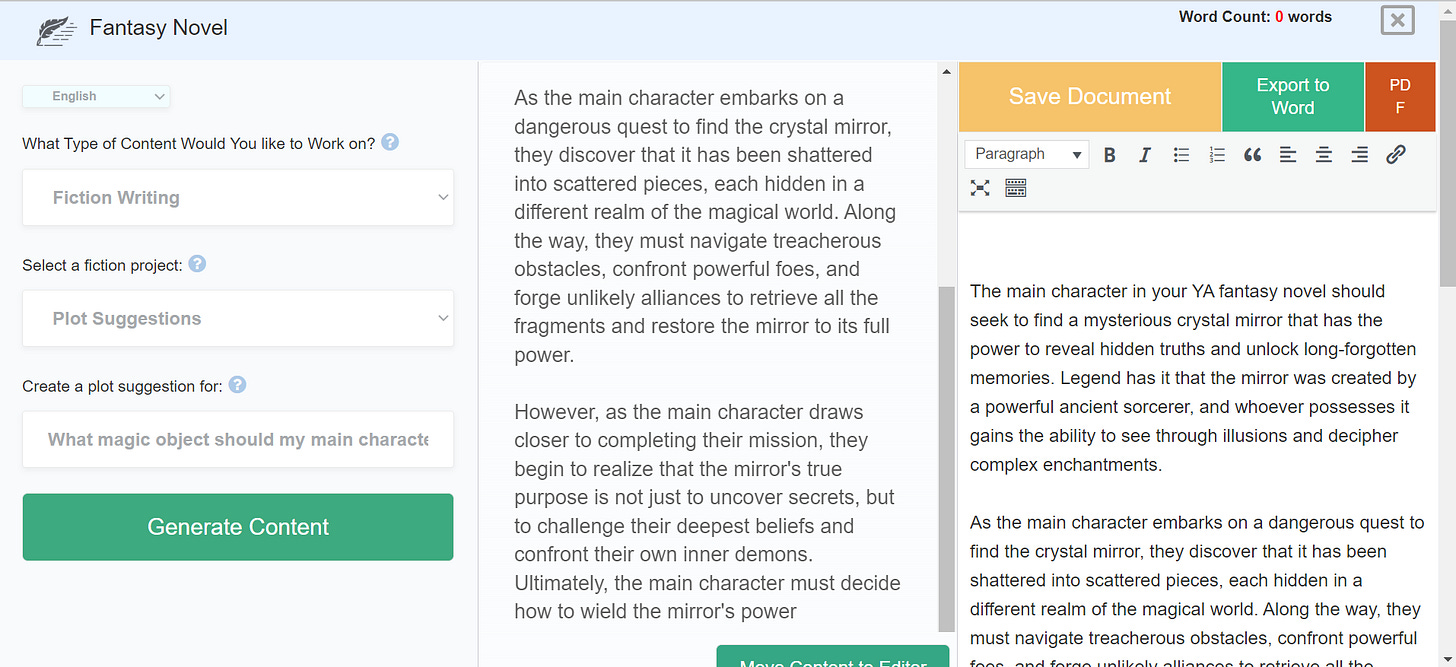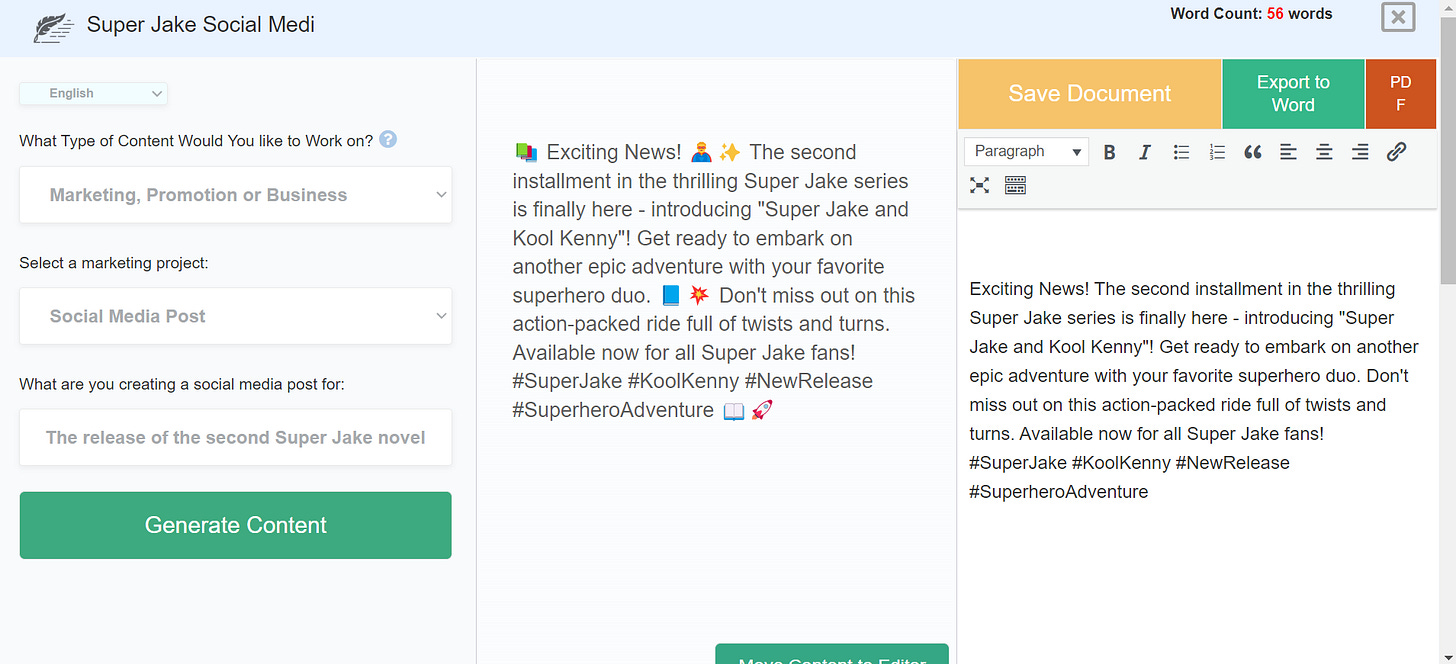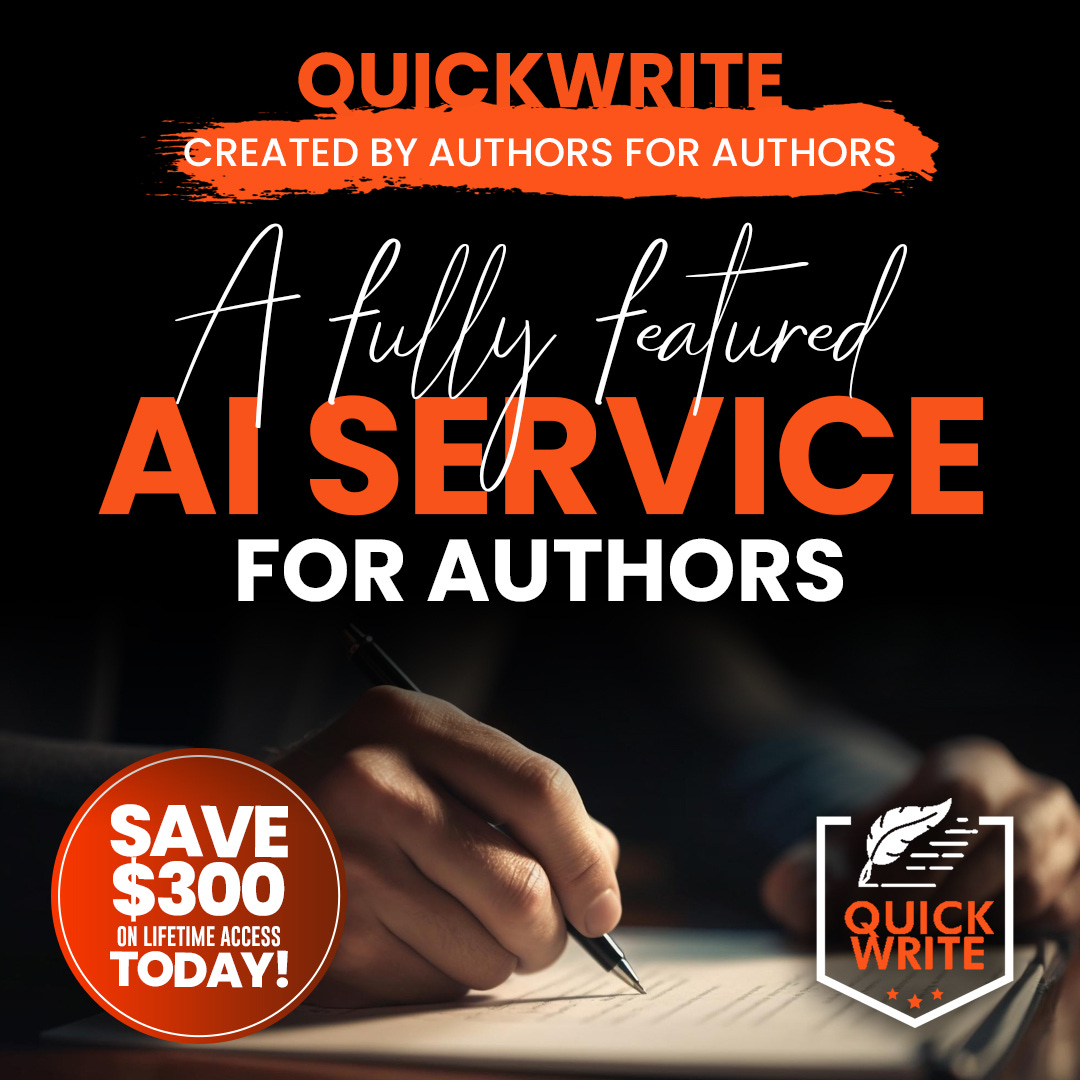10 Ways to Use AI for Your Book WITHOUT Taking the Creative Fun out of Writing
There are many ways authors can use the power of artificial intelligence without compromising your writing.
It’s here to stay, whether you like it or not. But, believe me, it can be an amazing tool if we know how to work with it.
In today’s rapidly evolving digital landscape, artificial intelligence (AI) has become a buzzword across various industries, including the creative sector. AI is a computer system capable of learning, decision-making, and problem-solving. For writers who cherish the creative process, the thought of integrating AI into their craft might seem daunting or even threatening. Christians especially seem especially wearing of AI, as I addressed in my book AI in Church and Ministry.
However, when used wisely, AI can be a powerful tool that enhances creativity rather than diminishing it. This article explores 10 non-technical, fun ways to use AI in your writing without stripping away the joy of creation.
[This post is sponsored by QuickWrite.]
1. Idea Generation
Stuck on what to write next? AI can help generate ideas and prompts based on your interests or current trends. This can kickstart your creativity when you’re facing writer’s block, providing fresh angles for stories, articles, or even characters.
2. Enhancing Research
AI can quickly sift through vast amounts of data to find relevant information for your writing project. It’s also great at making complex ideas sound much simpler if you aren’t an expert in your subject area. Whether you’re crafting a historical novel or need accurate scientific details about a study, AI tools can bring the most up-to-date information to your fingertips without overwhelming you. I
3. Grammar and Style Checks
Let AI handle the grunt work of catching typos, grammatical errors, and stylistic inconsistencies. Use AI tools polish your writing, making it more readable and professional without tampering with your unique voice. I still use human editors—especially to help readability—but I commonly use AI to run through and catch the easy stuff.
4. Character Development
Some AI applications can help you flesh out characters by suggesting traits, backstories, or potential development arcs. This doesn’t replace your creative input but rather provides a springboard for deeper character exploration. Remembering, AI is often trained to know the basic structures
5. Plot Structuring
Struggling with plot holes or pacing? AI tools can analyze your outline and suggest improvements, ensuring that your narrative flow keeps readers engaged from start to finish. You can even mention specific plot structures, such as Save the Cat Writes a Novel if you want your work to fit that outline.

6. Writing Prompts
AI-generated writing prompts can be surprisingly inventive, offering starting points for exercises, short stories, blog posts, journal entries, or even the spark for your next big project. These prompts can help you explore new genres or themes outside your comfort zone or tackle ideas you hadn’t thought about before.
7. Title Generation
Coming up with the perfect title can be challenging. AI can propose a variety of titles based on your content’s theme and tone, giving you a wide range of options to choose from or modify.
8. Marketing Copy
Many writers love the creative aspect of book writing but loathe the marketing and business. Luckily, AI can do the grunt work for you—creating social media posts, sales copy, email copy, and more.

9. Book Description Generation
Personally, I hate writing book descriptions. Often, I employ AI to synthesize and summarize my complex work into an engaging description for marketing copy and the back of the book. Tools like QuickWrite can rewrite an existing description or generate a brand-new one based on the ideas you feed it.
10. Feedback and Analytics
AI can offer immediate, objective feedback on your writing’s readability, complexity, and even SEO potential. This instant critique can be a helpful complement to human feedback, offering insights that might not be immediately obvious.
Embracing AI as a Creative Partner
The key to using AI in your writing is to view it as a tool, not a replacement for your creativity. By leveraging AI for tasks like research, editing, and structure, you can free up more time to focus on the truly creative aspects of your work. AI can handle the technicalities, while you dive deep into the art of storytelling, character creation, and expressing your unique voice.
Remember, AI is here to enhance your creative process, not to replace the joy of writing. By integrating these AI tools thoughtfully, you can maintain the fun and satisfaction of writing, ensuring that your work remains as original and imaginative as ever.
In summary, artificial intelligence offers numerous opportunities to support and enrich the writing process without compromising the creative fun that draws writers to their craft. Whether it's generating ideas, polishing your prose, or helping you understand your audience better, AI can be a valuable ally on your creative journey. So, why not explore what AI can do for you? After all, the goal is to enhance your writing, not to change what makes it uniquely yours.
This post is sponsored by QuickWrite.
QuickWrite is a futuristic, life-changing, research-doing, word-writing, magical tool that allows fiction and non-fiction authors to get their books written 10X faster. Unlike more general-use AI tools, this one is SPECIFICALLY for authors and it’s specially designed with options so you don’t have to mess around with complicated prompts. For a special, discounted lifetime subscription, go to this link and choose whether you plan to primarily use the tool for fiction or non-fiction.



